Understanding the appropriate number of Discus fish to keep together is crucial for their well-being and overall harmony in the aquarium. Discus fish are known for their vibrant colors and graceful swimming patterns, making them a popular choice among aquarium enthusiasts. In this article, we will explore how many fish to be kept together, taking into consideration their social nature, tank size, and compatibility with other fish.

Discus Fish Breeds
Before delving into the ideal number of Discus fish to keep together, let’s first familiarize ourselves with this unique breed. Discus fish, scientifically known as Symphysodon, are native to the Amazon River basin and are recognized for their round shape and striking patterns. They are known for their social behavior and are often found in groups in the wild.
There are various types of Discus fish breeds, each with its own distinct characteristics and coloration. Some popular breeds include the Blue Diamond Discus, Red Melon Discus, and Turquoise Discus. These breeds showcase different colors and patterns, adding diversity and beauty to any aquarium.
Discus Companions and Environment
Discus are shoaling fish, meaning they naturally thrive in groups. While it’s possible to keep one fish, it’s generally best to maintain at least a small group of 5-6 adult discus. This provides comfort and lessens stress in these social creatures.
If you’re starting with juvenile discus, a larger group is even better. For tank mates, peaceful tropical fish like cardinal tetras make excellent additions to a discus community, particularly in a planted tank. Floating plants add shade and security, further contributing to healthy discus.
Discus keeping requires dedication to pristine water quality. Aim for very low levels of ammonia, nitrites, and nitrates. This means meticulous tank maintenance, including weekly water changes with properly conditioned tap water.
Since discus are sensitive to fluctuations, stable temperature and pH levels are also crucial for their well-being. A well-established, balanced environment will promote long-term health and lessen the
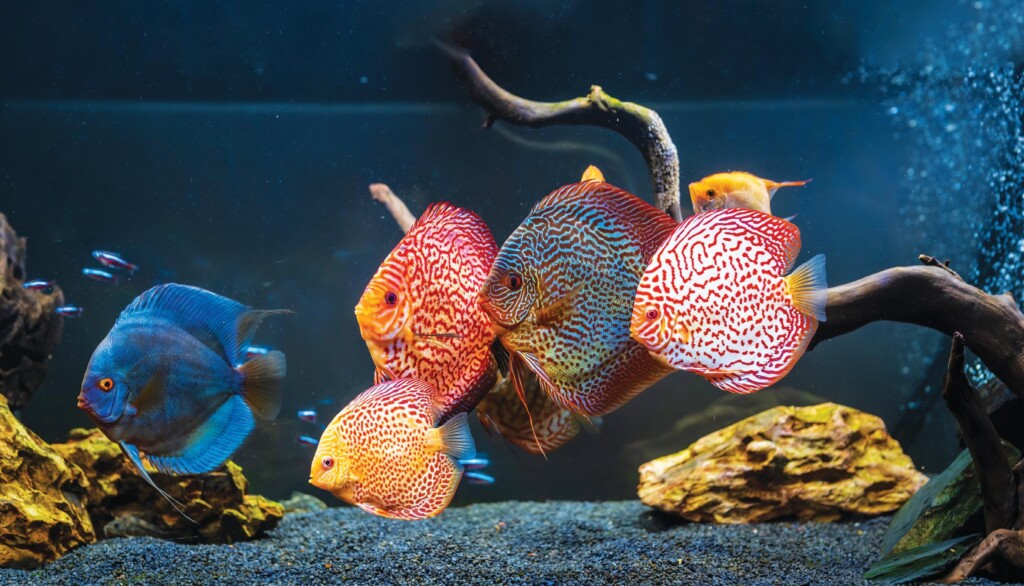
Optimal Number of Discus Fish to Keep Together
When determining how many Discus fish to keep together, several factors should be taken into consideration. Firstly, it is recommended to have a minimum of three to five Discus fish in a group. This allows for social interactions and natural hierarchy establishment among the fish.
The general rule of thumb is to have one Discus fish per ten gallons of water. For example, a 55-gallon tank can accommodate approximately five to six Discus fish. It is important to note that the tank size should be appropriate for their height, as Discus fish are taller-bodied compared to other species. Avoid keeping them in shallow tanks to ensure their well-being.
Group Dynamics and Tankmates for Discus Fish
Discus fish are highly social animals, and keeping them in a group helps mimic their natural behavior and provides a sense of security. However, it is essential to consider the dynamics within the group as well as their compatibility with other tankmates.
When choosing tankmates for your Discus fish, opt for peaceful and non-aggressive species that can thrive in similar water conditions. Some suitable tankmates include tetras, rasboras, and Corydoras catfish. These species are known to peacefully coexist with Discus fish and can create a visually appealing and harmonious aquarium community.
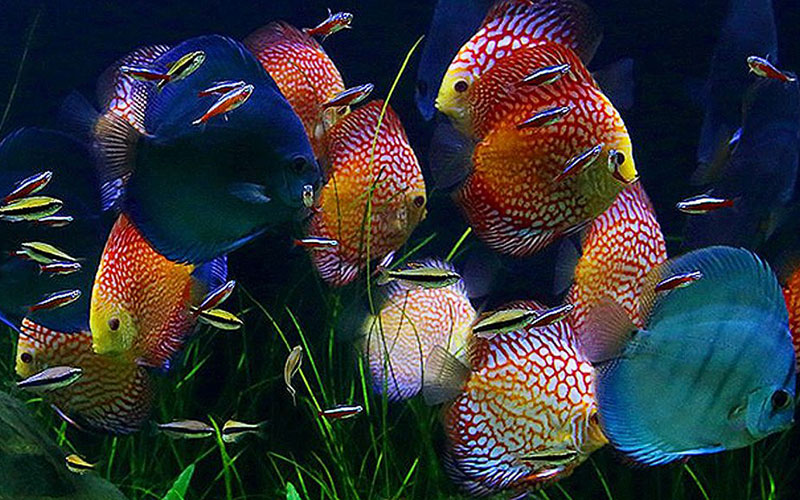
Maintaining a Healthy Environment for Discus Fish Groups
In order to ensure the well-being of your Discus fish group, it is crucial to maintain a healthy environment in the aquarium. Monitoring water quality parameters such as temperature, pH levels, and ammonia levels is essential. Discus fish thrive in warm, slightly acidic water with a pH range between 6.0 and 7.5.
Proper nutrition is also vital for the overall health and vitality of Discus fish. Offer a well-balanced diet consisting of high-quality pellets, flakes, and occasional live or frozen foods. Providing varied and nutritious meals will help support their immune system and enhance their vibrant colors.
Common Challenges and Troubleshooting
When keeping Discus fish in a group, it is important to be aware of potential challenges that may arise. Some common issues include aggression between individuals, dominance battles, and the spread of diseases. Observing the behavior of the fish regularly and taking prompt action when necessary can help mitigate these challenges.
If any health issues surface within the group, such as fin rot or ich, prompt intervention and treatment are crucial. Quarantining affected individuals and following appropriate medication methods can help combat these diseases and restore the health of the group.

Conclusion
Keeping a group of Discus fish together in an aquarium requires careful consideration of their social nature, tank size, and compatibility with other fish.
By following the suggested guidelines for the optimal number of Discus fish and understanding their behaviors and requirements, you can create a thriving and visually captivating aquarium environment.
Remember to prioritize the well-being of your fish by maintaining a healthy environment and promptly addressing any challenges that may arise.

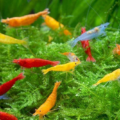
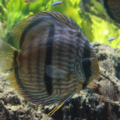
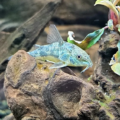
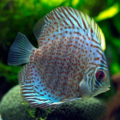
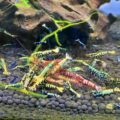
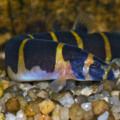
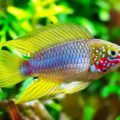
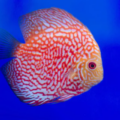
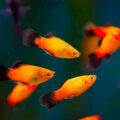
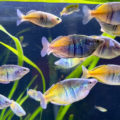
2 thoughts on “How Many Discus Should Be Kept Together?”